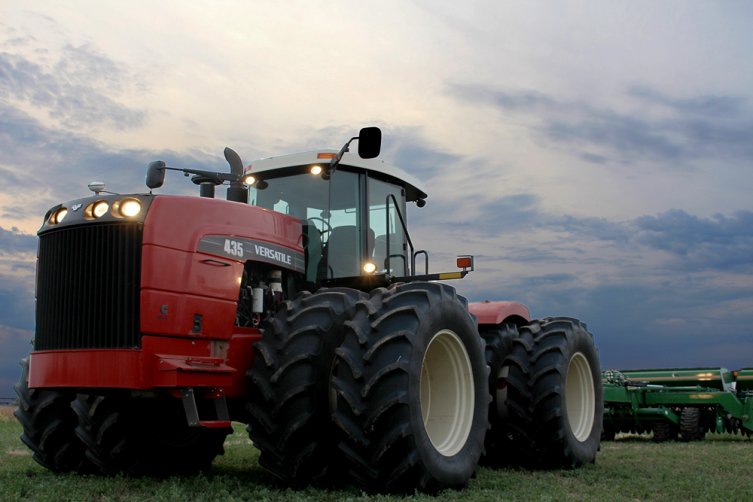Breadcrumb
- Home
- Recent news stories
- Keep warm, eat wheat
When Mother Nature strikes, photos of empty grocery store shelves start to emerge, but do you know where the bread that flew off the racks came from?
Did you visit a farm in your childhood? Maybe it was your grandparents’, with rolling green pastures and an old tractor that you had to turn the key “just right” and send up a prayer for it to fire up. Or maybe the only farm you’ve ever seen is one in an Old MacDonald picture book. While these farms have the same values as modern farmers, the scenery might be a little different.
About 97 percent of farms in the U.S. are operated by families. In Kansas, 20,000 farmers grow the wheat you might have consumed in your latest loaf of bread. These are some of the tools that our farmers might use.
Tractor- used to pull other implements in the field. Might have Auto-steer, a way to boost precision in the fields by using GPS.

Tractor- used to pull other implements in the field. Might have Auto-steer, a way to boost precision in the fields by using GPS.
Planter (drill)- pretty self-explanatory, because this is how the wheat seed is planted. You can have some questions about planting answered here.
Combine- these gentle giants dominate the golden fields of wheat during harvest time. It scoops and cuts the wheat plant up in the header, the spinning front part of the combine. From there, the machine sorts the grain from the straw and chaff. The grain is stored in a bin while the straw is dispensed out the back for future use (like straw bales for livestock and organic compost).
Elevator- these prairie skyscrapers dot the skyline of rural America. They are used to store grains, like wheat.
To you, the bread might magically appear on the grocery shelf, but there is an entire industry that helps you enjoy that artisan grilled cheese sandwich. To take a closer look at how wheat gets from the mind of a wheat breeder to that Hot Pocket you’ve got in the microwave, be sure to check out our brief timeline.
Who cares how wheat is produced if it’s just going to slowly kill you with gluten, the scourge of America? Fear not, gluten isn’t “Satan”, it’s simply a combination of two proteins. This happens when two small proteins- gliadin and glutenin- bind to each other when a baker adds water to flour and starts to knead the mixture into dough.
Gluten is important to the texture and taste of your baked good. It gives the dough elasticity, which should ultimately translate into a chewy, delicious product. To learn more about gluten, head here.
Chances are that the bread you stocked up on came from hard red winter wheat, but did you know there were six total classes?
Wheat is a hardy crop that has been used to feed humans for over 10,000 years. So be sure to heat up your home during the snowpocalypse by baking your bread, and eating it, too!
